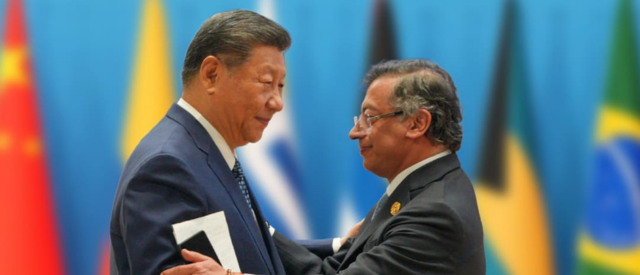Four key factors that Mexico took advantage to become the leading importer to the United States
13 May, 2024

Opinion article by Nifta Lau, researcher at the Center for China and Asia-Pacific Studies, Universidad del Pacífico.
During the first two months of this year, Mexico reached a record figure in exports of goods to the United States for $78.28 million, an increase of 7.7% compared to the same period in 2023, consolidating its position as the biggest exporter to the North American country and displacing the country that had occupied this position for the last 20 years: China.
Data released by the Department of Commerce in early February this year revealed that in 2023, imports from Mexico to the United States amounted to $475.6 billion, a 5% increase from the previous year. During the same period, the United States imported $427.2 billion from China, 20% less compared to 2022. Likewise, United States exports to Mexico during the first two months of this year closed at $53.2 billion, resulting in a surplus of more than $25 billion for Mexico.
Overall, the trend that has led to the largest annual drop in the U.S. deficit in its trade in goods and services since 2009, around 18.7% lower than in 2022, is due in part to the weak dollar, which has made the cost of its products cheaper. The trade war between China and the United States has not declared either country the winner, especially in the manufacturing sector. By 2023, U.S. manufacturing activity had weakened for the longest period since 2002, while China contracted in 10 of the 12 months of the same year. As the U.S. reduced its imports of some goods such as electronics and placed tariff barriers of up to 25% on some products imported from China, some countries benefited from the trade war, and Mexico was one of the most notorious cases.
Some factors that have contributed to Mexico taking advantage of this situation include: a) the strength of the Mexican peso against the dollar -which has been the highest since 2015-, b) the increase of foreign investments in the country, c) the arrival of more and more large foreign multinational companies, and d) the United States, Mexico and Canada Agreement (USMCA). While the Mexican peso has increased in value by nearly 10% against the dollar during 2023, other currencies such as the Australian dollar, Japanese yen, and Chinese yuan have weakened relatively to the U.S. dollar. The strength of the Mexican peso has helped keep inflation at bay, which has benefited the country by supporting increased foreign exchange inflows.
Near-shoring, an outsourcing strategy in which part of production is transferred to third parties, commonly to a nearby location contributed in large part to the nearly $30 billion in foreign direct investment that Mexico received during the first half of 2023, an increase of more than 40% over 2022. The emblematic boom of this Mexico-bound phenomenon was Tesla’s announcement to build a factory in the state of Nuevo Leon, in the north of the country, which is presumed to start production by 2026. Following this line, investment in construction projects increased in the country by more than 20% compared to last year.
In addition to the combination of the strength of the Mexican peso and high interest rates, the USMCA has made the country an attractive destination for investment, as is the case that most of the goods exported to the United States from Mexico do not carry tariffs. On the issue of auto imports – one of Mexico’s main exports to the United States along with computers – U.S. law applies only a 2.5% tariff to those that do not comply with USMCA guidelines. Meanwhile, while China has never been a major supplier of vehicles to the U.S. – which does not mean that Mexico has gained directly from a loss of ground from China – now not only are U.S. companies doing business with China such as Tesla investing in manufacturing plants and production in Mexico to export back to the U.S, but also Chinese and Taiwanese companies such as Foxconn, Noah Itech, BYD and Lingong Machinery Groups (LGMG), have found it attractive to join the production chain or relocate their plants to Mexico taking advantage of the USMCA. While it appears that the sun will continue to rise for Mexico for some time to come, much of the continuity of this regional dynamic will depend on whether the USMCA is renegotiated by the next US administration.

